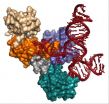(Press-News.org) CORVALLIS, Ore. – The cause of potato late blight and the Great Irish Famine of the 1840s has been tracked to a pretty, alpine valley in central Mexico, which is ringed by mountains and now known to be the ancestral home of one of the most costly and deadly plant diseases in human history.
Research published today in the Proceedings of the National Academy of Sciences, by researchers from Oregon State University, the USDA Agricultural Research Service and five other institutions, concludes that Phytophthora infestans originated in this valley and co-evolved with potatoes over hundreds or maybe a few thousand years, and later spread repeatedly to much of the world.
Knowing the origin of the pathogen does more than just fill in a few facts in agricultural history, the scientists say. It provides new avenues to discover resistance genes, and helps explain the mechanisms of repeated emergence of this disease, which to this day is still the most costly potato pathogen in the world.
Potato late blight continues to be a major threat to global food security and at least $6 billion a year is spent to combat it, mostly due to the cost of fungicides and substantial yield losses. But P. infestans is now one of the few plant pathogens in the world with a well-characterized center of origin.
"This is immensely important," said Niklaus Grunwald, who is a courtesy professor in the Department of Botany and Plant Pathology in the College of Agricultural Sciences at Oregon State University, a researcher with the USDA Agricultural Research Service, and lead author on the study.
"This is just a textbook example of a center of origin for a pathogen, and it's a real treat," Grunwald said. "I can't think of another system so well understood. This should allow us to make significant headway in finding additional genes that provide resistance to P. infestans."
Finding ways to genetically resist the potato late blight, scientists say, could help reduce the use of fungicides, and the expense and environmental concerns associated with them.
There had been competing theories about where P. infestans may have evolved, with the leading candidates being the Toluca Valley near Mexico City, or areas in South America where the potato itself actually evolved thousands of years ago.
Gene sequencing technology used by this research group helped pin down the Toluca Valley as the ancestral hot spot. The P. infestans pathogen co-evolved there hundreds of years ago with plants that were distant cousins of modern potatoes, which produced tubers but were more often thought of as a weed than a vegetable crop.
Today, the newly-confirmed home of this pathogen awaits researchers almost as a huge, natural laboratory, Grunwald said. Since different potato varieties, plants and pathogens have been co-evolving there for hundreds of years, it offers some of the best hope to discover genes that provide some type of resistance.
Along with other staple foods such as corn, rice and wheat, the potato forms a substantial portion of the modern human diet. A recent United Nations report indicated that every person on Earth eats, on average, more than 70 pounds of potatoes a year. Potatoes contain a range of vitamins, minerals, phytochemicals, fiber and – for hungry populations – needed calories.
It's believed that the potato was first domesticated more than 7,000 years ago in parts of what are now Peru and Bolivia, and it was brought to Europe by Spanish explorers in the late 1500s. A cheap and plentiful crop that can grow in many locations, the ability to increase food production with the potato eventually aided a European population boom in the 1800s.
But what the New World provided, it also took away - in the form of a potato late blight attack that originated from Mexico, caused multiple crop failures and led, among other things, to the Irish potato famine that began in 1845. Before it was over, 1 million people had died and another 1 million emigrated, many to the U.S.
That famine was exacerbated by lack of potato diversity, as some of the varieties most vulnerable to P. infestans were also the varieties most widely cultivated.
INFORMATION:
Collaborators on the research were from the University of Florida, the James Hutton Institute in Scotland, the University of the Andes in Colombia, Cornell University, and the International Potato Center in Beijing. It was supported by the U.S. Department of Agriculture and the Scottish government.
Editor's Note:
Digital images are available to illustrate this story.
Toluca Valley of Mexico, home of P. infestans: http://bit.ly/1tUUfBL
Plant relative of modern potatoes: http://bit.ly/1km99Jw
Infected potato plant: http://bit.ly/1rlSXBQ
Tracking potato famine pathogen to its home may aid $6 billion global fight
2014-06-02
ELSE PRESS RELEASES FROM THIS DATE:
Tumor size is defining factor to response from promising melanoma drug
2014-06-02
CHICAGO — In examining why some advanced melanoma patients respond so well to the experimental immunotherapy MK-3475, while others have a less robust response, researchers at Mayo Clinic in Florida found that the size of tumors before treatment was the strongest variable.
MULTIMEDIA ALERT: Video and audio are available for download on the Mayo Clinic News Network.
They say their findings, being presented June 2 at the 50th annual meeting of the American Society of Clinical Oncology (ASCO), offered several clinical insights that could lead to different treatment strategies ...
Anti-diabetic drug slows aging and lengthens lifespan
2014-06-02
A study by Belgian doctoral researcher Wouter De Haes (KU Leuven) and colleagues provides new evidence that metformin, the world's most widely used anti-diabetic drug, slows ageing and increases lifespan.
In experiments reported in the journal Proceedings of the National Academy of Sciences, the researchers tease out the mechanism behind metformin's age-slowing effects: the drug causes an increase in the number of toxic oxygen molecules released in the cell and this, surprisingly, increases cell robustness and longevity in the long term.
Mitochondria – the energy factories ...
Marijuana shows potential in treating autoimmune disease
2014-06-02
A team of University of South Carolina researchers led by Mitzi Nagarkatti, Prakash Nagarkatti and Xiaoming Yang have discovered a novel pathway through which marijuana can suppress the body's immune functions. Their research has been published online in the Journal of Biological Chemistry.
Marijuana is the most frequently used illicit drug in the United States, but as more states legalize the drug for medical and even recreational purposes, research studies like this one are discovering new and innovative potential health applications for the federal Schedule I drug. ...
Shape matters...
2014-06-02
Which look bigger, packages of complicated shape or packages of simple shape? Some prior research shows that complex packages appear larger than simple packages of equal volume, while other research has shown the opposite - that simple packages look bigger than the more complex. US researchers, writing in the International Journal of Management Practice believe they have resolved this dilemma.
Lawrence Garber of Elon University in North Carolina and Eva Hyatt and Ünal Boya of Appalachian State University report that human beings are just not very good at estimating the ...
Carnegie Mellon researchers discover social integration improves lung function in elderly
2014-06-02
PITTSBURGH—It is well established that being involved in more social roles, such as being married, having close friends, close family members, and belonging to social and religious groups, leads to better mental and physical health. However, why social integration — the total number of social roles in which a person participates — influences health and longevity has not been clear.
New research led by Carnegie Mellon University shows for the first time that social integration impacts pulmonary function in the elderly. Lung function, which decreases with age, is an important ...
Study suggests fast food cues hurt ability to savor experience
2014-06-02
Toronto – Want to be able to smell the roses?
You might consider buying into a neighbourhood where there are more sit-down restaurants than fast-food outlets, suggests a new paper from the University of Toronto's Rotman School of Management.
The paper looks at how exposure to fast food can push us to be more impatient and that this can undermine our ability to smell the preverbal roses.
One study, surveyed a few hundred respondents throughout the US on their ability to savor a variety of realistic, enjoyable experiences such as discovering a beautiful waterfall on ...
Gene therapy combined with IMRT found to reduce recurrence for select prostate cancer patients
2014-06-02
Fairfax, Va., June 2, 2014—Combining oncolytic adenovirus-mediated cytotoxic gene therapy (OAMCGT) with intensity modulated radiation therapy (IMRT) reduces the risk of having a positive prostate biopsy two years after treatment in intermediate-risk prostate cancer without affecting patients' quality of life, according to a study published in the June 1, 2014 edition of the International Journal of Radiation Oncology • Biology • Physics (Red Journal), the official scientific journal of the American Society for Radiation Oncology (ASTRO).
Previous prospective ...
How Thomas Edison laid the foundation for the modern lab (video)
2014-06-02
WASHINGTON, June 2, 2014 — Thomas Edison is hands-down one of the greatest inventors in history. He also had a love of chemistry that banished him to the basement as a kid. This week, the Reactions team went behind the scenes at the Thomas Edison National Historical Park to see how Edison's love of chemistry fueled his world-changing inventions. Recently named a National Historic Chemical Landmark, the complex is home to more than 400,000 artifacts (which we definitely weren't allowed to touch) and is considered the template for modern research-and-development labs everywhere. ...
Scientists capture most detailed images yet of humans' tiny cellular machines
2014-06-02
MADISON, Wis. — A grandfather clock is, on its surface, a simple yet elegant machine. Tall and stately, its job is to steadily tick away the time. But a look inside reveals a much more intricate dance of parts, from precisely-fitted gears to cable-embraced pulleys and bobbing levers.
Like exploring the inner workings of a clock, a team of University of Wisconsin-Madison researchers is digging into the inner workings of the tiny cellular machines called spliceosomes, which help make all of the proteins our bodies need to function. In a recent study published in the journal ...
Computer scientists develop tool to make the Internet of Things safer
2014-06-02
Computer scientists at the University of California, San Diego, have developed a tool that allows hardware designers and system builders to test security- a first for the field. One of the tool's potential uses is described in the May-June issue of IEEE Micro magazine.
"The stakes in hardware security are high", said Ryan Kastner, a professor of computer science at the Jacobs School of Engineering at UC San Diego.
There is a big push to create the so-called Internet of Things, where all devices are connected and communicate with one another. As a result, embedded ...




